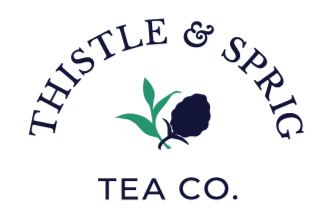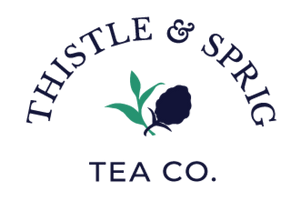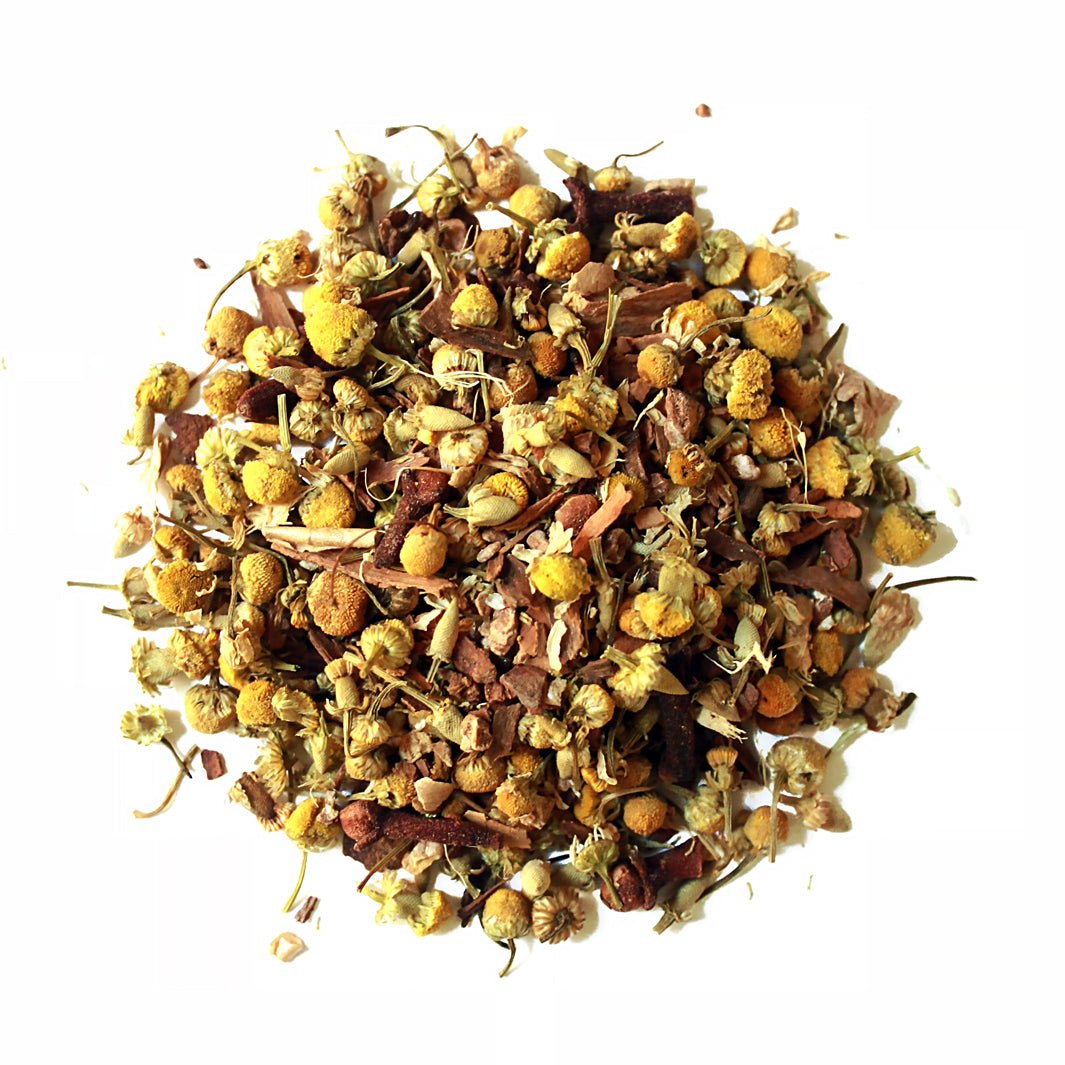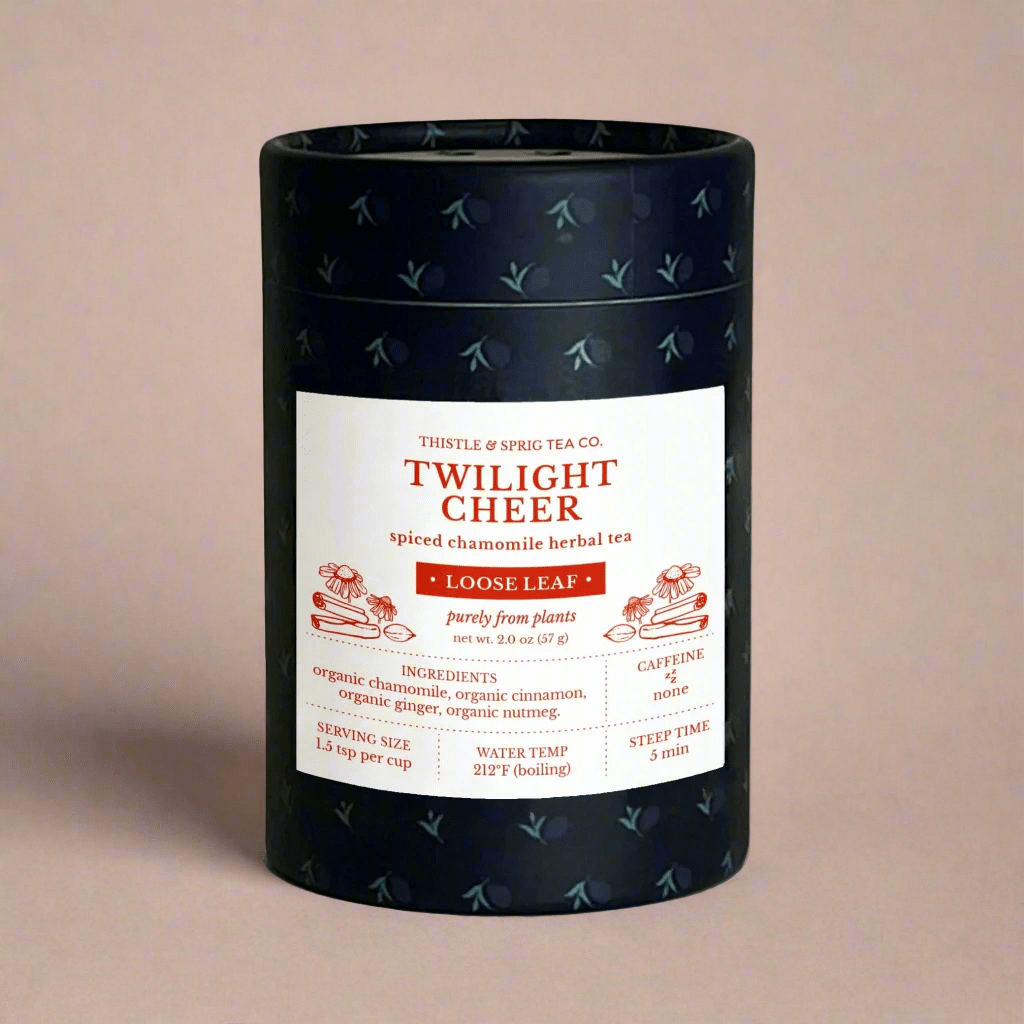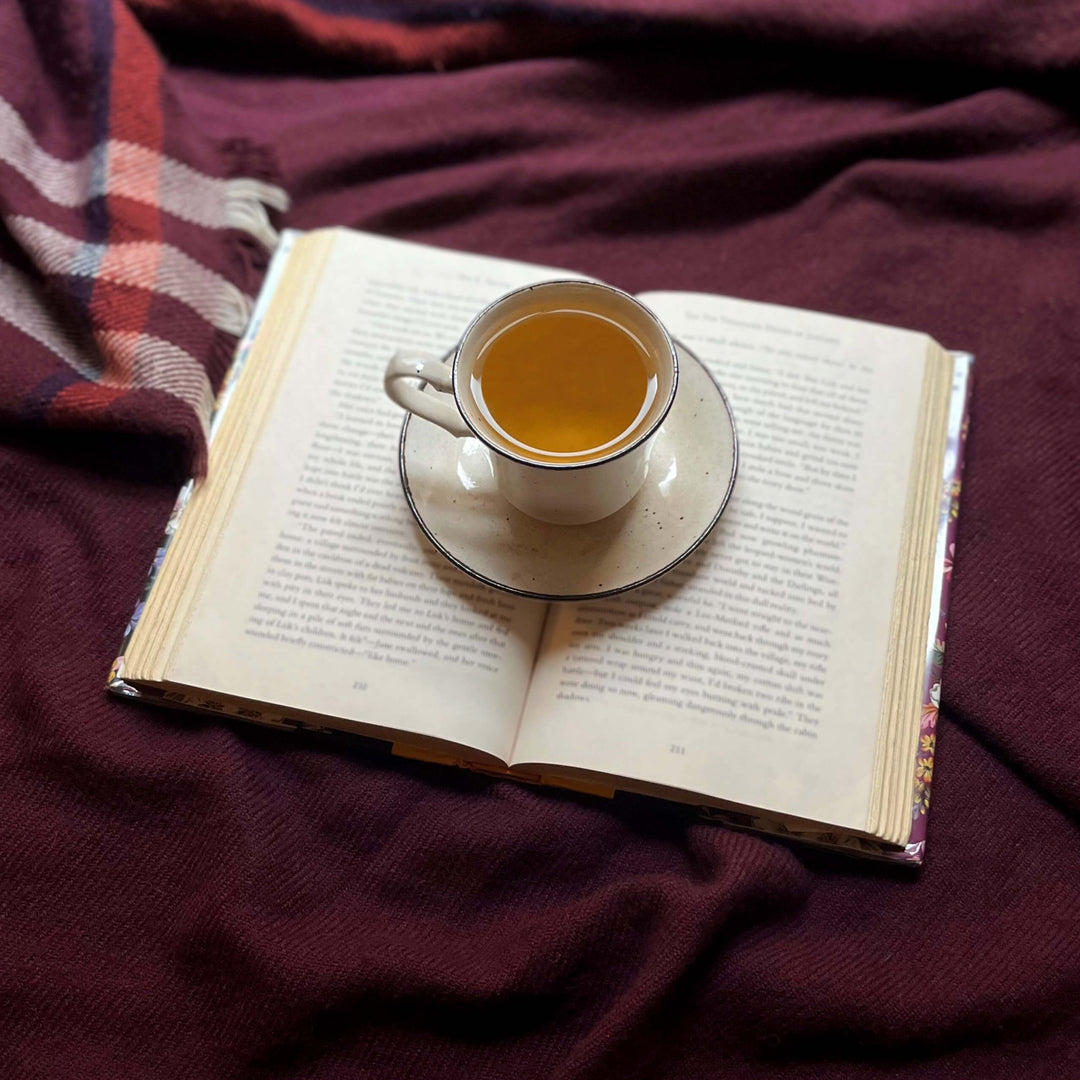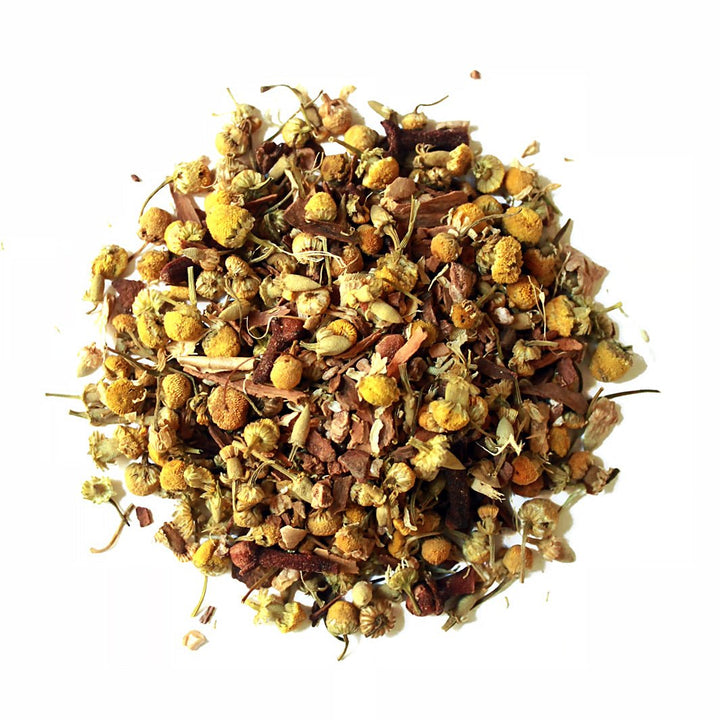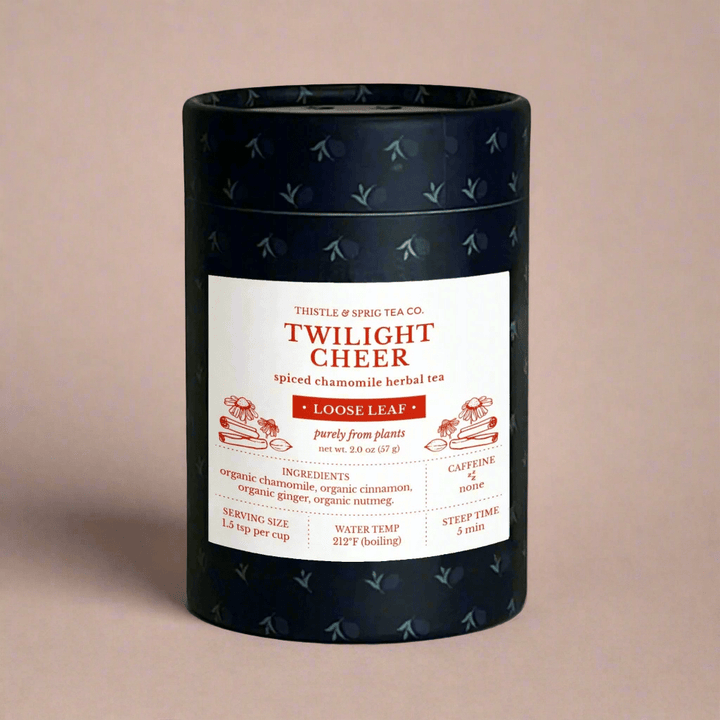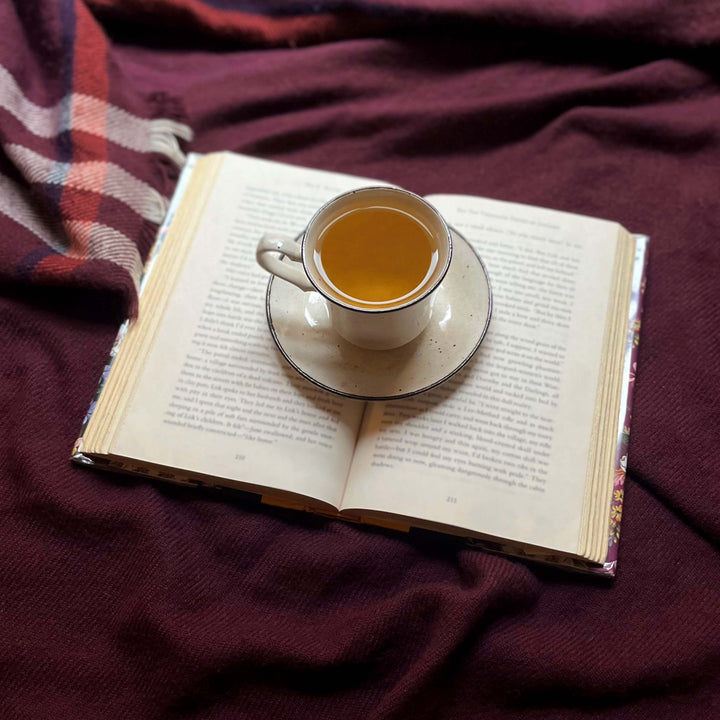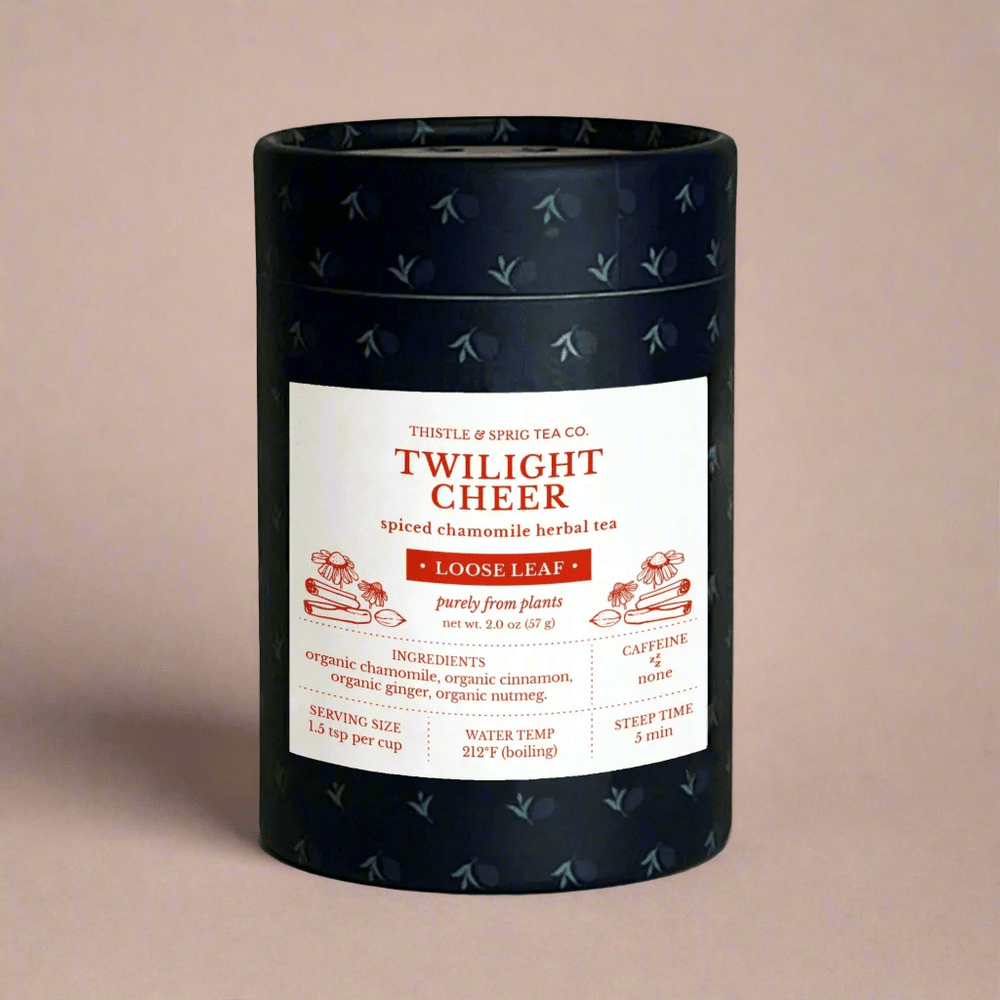Twilight Cheer, Loose
- Spiced Chamomile Herbal Tea
Help yourself to some Twilight Cheer with this calm and cozy tea. This spiced chamomile blends offers notes of apple, earth, cinnamon and caramel, yielding a cup of sweet blissful warmth on the coldest of days. Naturally caffeine free.
FOR FINER LOOSE TEAS
- Caffeine-free. Certified Organic Ingredients.
BLACK TEA comes from the
camellia sinensis plant. Black teas are withered, rolled, and fully oxidized, which is what darkens them from green to black. Black teas feature deep and robust flavors and generally have the highest caffeine content of all tea.
GREEN TEA comes from the
cammellia sinensis plant. Typically, the newest, young shoots of the plant are harvested then immediately dried to prevent oxidation. Flavor profiles are wide-ranging and include smoky, sweet, vegetal, grassy,
umami, nutty, and floral. Green teas typically contain a low to moderate amount of caffeine.
HERBAL TEA (also called a tisane), is an infusion from any plant other than camellia sinensis. Herbal teas are almost always naturally caffeine free and can be made
from a wide variety of herbs, flowers, and spices. Popular herbal teas include mint, chamomile, ginger, turmeric, cinnamon, hibiscus, and
lemongrass.
Shipping
Orders over $48 always ship for free. There's a small scaling shipping fee for orders below $48 depending on order weight and size. We currently ship nationwide in the USA only.
We are an artisanal small business producing and packing your order with care. Most orders ship within 1 - 3 business days, although during peak times it may extend to 5 business days. You can expect another 1 - 5 business days for transit.
If you are concerned about your order getting delayed or have questions about an existing or future order, please don't hesitate to get in touch.
If your order has not shown up in 12 business days, definitely get in touch and we will get it sorted for you.
Returns & Exchanges
We appreciate every single customer and want you to be genuinely happy with your purchase. You can initiate your own return within 14 days of receiving it if product is unopened and in its original packaging on your Account page. (Unopened is a sticking point for tea products because of FDA food safety requirements.) Customer is responsible for return shipping.
If your product is damaged or defective, please let us know and we will replace it free of charge.
If you're less than satisfied in any way with your order, even after the two-week return period, please contact us.
You can reach out at 404-666-3016 or info[@]thistleandsprig[dot]com regarding your order, or if you simply have any questions.
Placing Your Order
You can view your cart or checkout here. You can also view or create an account here.
You can use any major credit or debit card, as well as Apple Pay, Shop Pay, or Paypal to check out.
If you accidentally signed up for Shop Pay and don't want to continue receiving text messages, you can opt out of Shop Pay here (note, this will opt you out of Shop Pay for all websites that offer it.)
